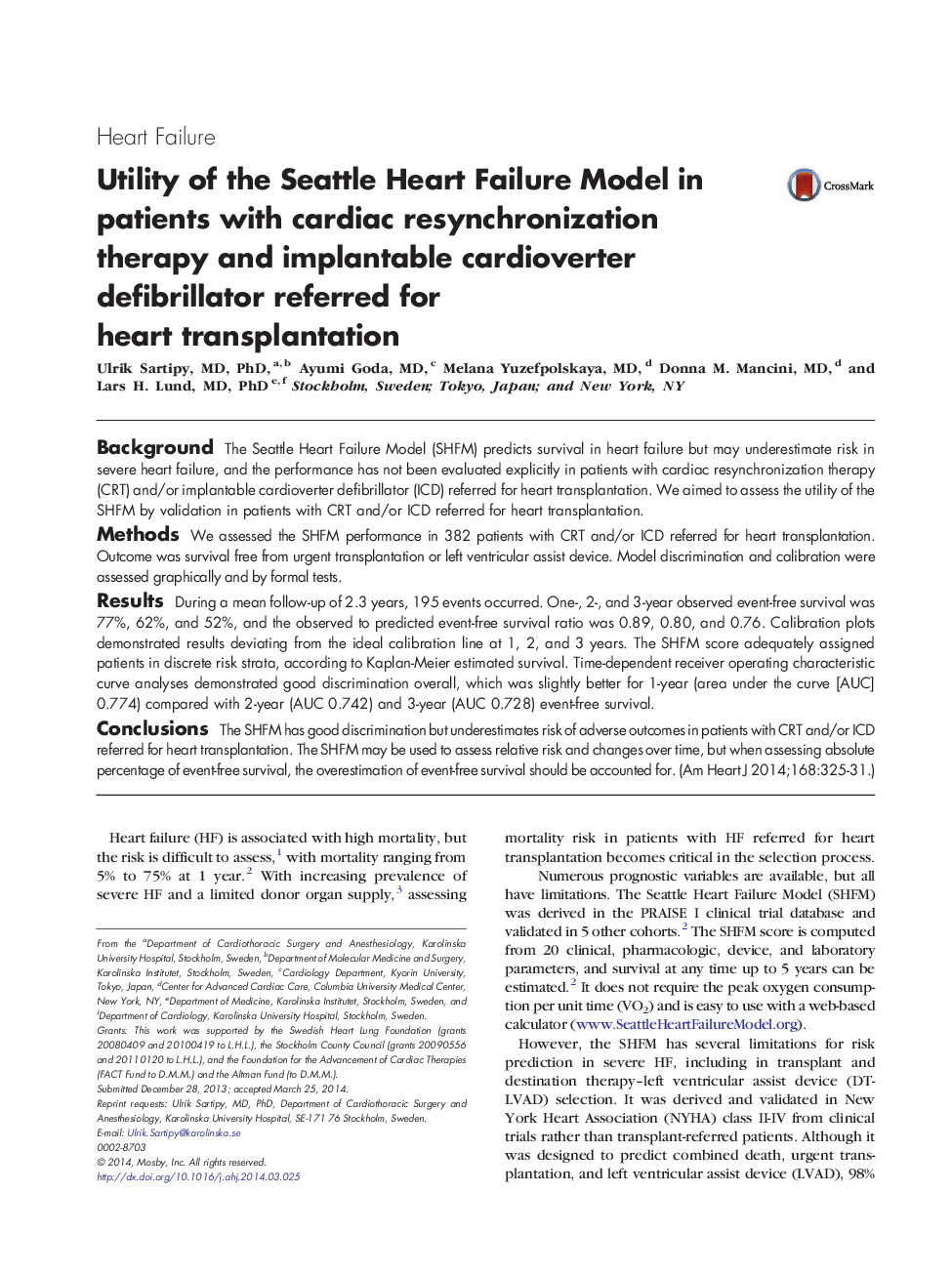| Article ID | Journal | Published Year | Pages | File Type |
|---|---|---|---|---|
| 2849376 | American Heart Journal | 2014 | 7 Pages |
BackgroundThe Seattle Heart Failure Model (SHFM) predicts survival in heart failure but may underestimate risk in severe heart failure, and the performance has not been evaluated explicitly in patients with cardiac resynchronization therapy (CRT) and/or implantable cardioverter defibrillator (ICD) referred for heart transplantation. We aimed to assess the utility of the SHFM by validation in patients with CRT and/or ICD referred for heart transplantation.MethodsWe assessed the SHFM performance in 382 patients with CRT and/or ICD referred for heart transplantation. Outcome was survival free from urgent transplantation or left ventricular assist device. Model discrimination and calibration were assessed graphically and by formal tests.ResultsDuring a mean follow-up of 2.3 years, 195 events occurred. One-, 2-, and 3-year observed event-free survival was 77%, 62%, and 52%, and the observed to predicted event-free survival ratio was 0.89, 0.80, and 0.76. Calibration plots demonstrated results deviating from the ideal calibration line at 1, 2, and 3 years. The SHFM score adequately assigned patients in discrete risk strata, according to Kaplan-Meier estimated survival. Time-dependent receiver operating characteristic curve analyses demonstrated good discrimination overall, which was slightly better for 1-year (area under the curve [AUC] 0.774) compared with 2-year (AUC 0.742) and 3-year (AUC 0.728) event-free survival.ConclusionsThe SHFM has good discrimination but underestimates risk of adverse outcomes in patients with CRT and/or ICD referred for heart transplantation. The SHFM may be used to assess relative risk and changes over time, but when assessing absolute percentage of event-free survival, the overestimation of event-free survival should be accounted for.
